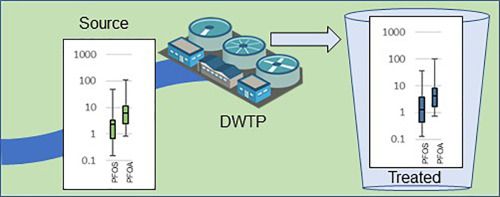U.S. Geological Survey and USEPA Published Research Results on Drinking Water Quality (Case Study)
Published on by Water Network Research, Official research team of The Water Network in Case Studies
This paper is part of a series of papers describing a comprehensive study of the presence, concentrations, and persistence associated with chemical and microbial contaminants of emerging concern (CECs) in source and treated drinking waters of the United States.

Graphical abstract, source: Science Direct
This research was a joint effort between the USEPA and the U.S. Geological Survey (USGS), as part of a long-term interagency agreement. The study was conducted in two phases, sampling a total of 29 drinking water treatment plants (DWTPs).
A primary goal of the study was to provide data for assessing potential human exposure via drinking water to an extensive set of CECs. The interdisciplinary approach of this nationwide study included measurement of CECs in both source and treated waters, evaluation of the potential health effects of the contaminants in an in vitro estrogenic activity bioassay, and screening for human and ecological health impact assessments.
Abstract:
Contaminants of emerging concern (CECs), including per- and polyfluoroalkyl substances (PFAS), are of interest to regulators, water treatment utilities, the general public and scientists. This study measured 17 PFAS in source and treated water from 25 drinking water treatment plants (DWTPs) as part of a broader study of CECs in drinking water across the United States. PFAS were quantitatively detected in all 50 samples, with summed concentrations of the 17 PFAS ranging from J. Scott Boonea, Craig Vigo, Tripp Boone, Christian Byrne, Joseph Ferrario, Robert Benson, Joyce Donohue, Jane Ellen Simmons, Dana W. Kolpine, Edward T. Furlong, "Per- and polyfluoroalkyl substances in source and treated drinking waters of the United States", Science of The Total Environment, February 2019, DOI: 10.1016/j.scitotenv.2018.10.245
Source: Science Direct
Media
Taxonomy
- Pollutants
- Drinking Water Security
- Water Pollution
- Micropollutants
- Polluted Water Oxidation
- Policy
- Governance & Policy
- Pollution
- Drinking Water Managment
- Drinking Water
- Government relations, politics and policy
- Micropollutants